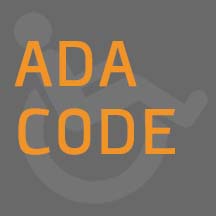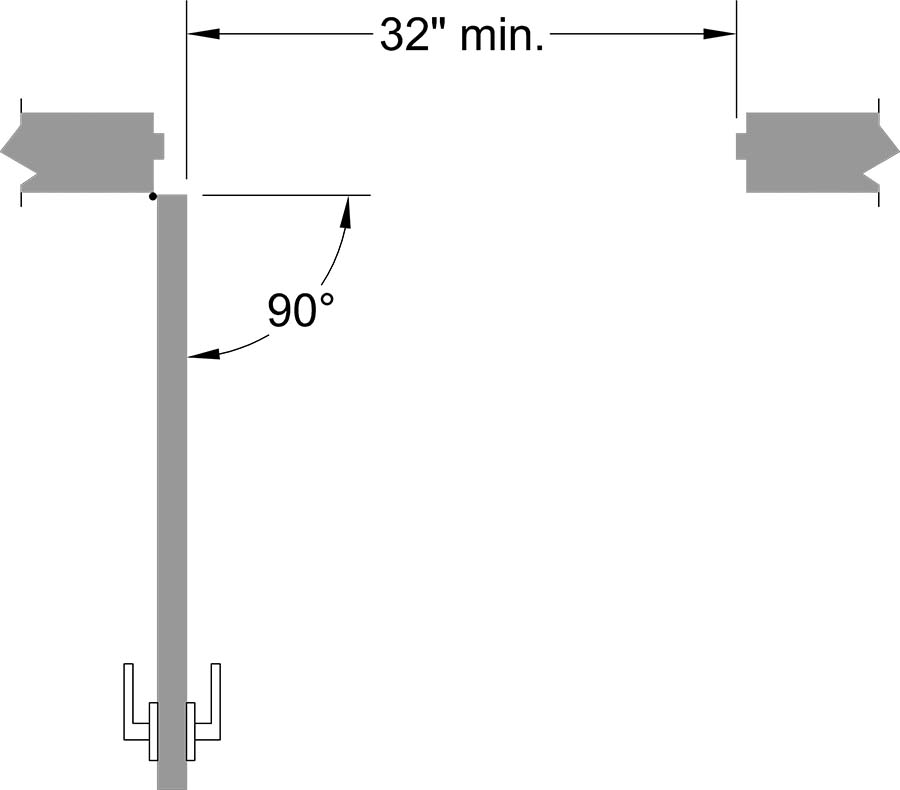 We regularly get asked about ADA codes for doors and locks. Sure, you can look at the code book, but if you’re like most, poring over the Americans with Disabilities Act (ADA) codes will make you go cross-eyed – especially the door section. There are so many numbers and exceptions that it’s enough to confuse even the veterans of our industry.
We regularly get asked about ADA codes for doors and locks. Sure, you can look at the code book, but if you’re like most, poring over the Americans with Disabilities Act (ADA) codes will make you go cross-eyed – especially the door section. There are so many numbers and exceptions that it’s enough to confuse even the veterans of our industry.
Allow me to shed light on some basic principles regarding ADA codes for doors and locks. It’s important to note that this is based on the 2010 code; some jurisdictions are still operating under the 2003 code. If you have any questions, contact your local Authority Having Jurisdiction (AHJ).
ADA Codes for Doors and Locks
 Clear Opening Width (404.2.3)
Clear Opening Width (404.2.3)
In order for wheelchairs to have clear passage through your doors, at a minimum, your clear opening width must be 32” wide. Clear width is measured from the face of the door to the stop when the door is fully opened at 90 degrees.
Thresholds (404.2.5)
Thresholds cannot be any higher than ½” and should be slip resistant.
Door and Gate Hardware (404.2.7)
The most important aspect of this section is the mounting height for operable parts (pulls, handles, etc.) – they need to be a minimum of 34” and a maximum of 48” above the finished floor.
There is one notable difference between the 2003 code and 2010 code. The 2003 code requires that any operable part have a shape that is easy to grasp with one hand without requiring tight grasping or twisting of the wrist to operate. This has been changed to an advisory in the 2010 code. To play it safe, do not use traditional door knobs – always use lever sets.
This advisory also dissuades the use of hardware that requires simultaneous hand and finger movements, such as keypads, but it does not state that this type of hardware is prohibited.
Closing Speed (404.2.8)
It’s time to get out the protractor that you thought you’d never use past college. If your door or gate has a door closer installed, it should be adjusted so that it takes at least 5 seconds for your door to close from 90° to 12°.
If your door or gates utilizes spring hinges, it should take at least 1.5 seconds to close from 70° to 0°.
Opening Force (404.2.9)
It should take no more than 5 pounds of continuous force to fully open a door or gate. Note: this does not apply to the amount of force it takes to retract the bolt or to the initial amount of force that it takes to start opening the door.
Here’s where one of those sticky exceptions comes into play. This requirement does not apply to fire-rated doors. Consult your local AHJ for opening force requirements pertaining to fire-rated doors.
Door & Gate Surfaces (404.2.10)
In order for your customers in wheelchairs to easily be able to open doors and gates, they must have a smooth surface that runs the full width of the door/gate on the push side. This surface should be a minimum of 10” above the finished floor.
Vision Lights (404.2.11)
This section refers to windows in or adjacent to doors and gates. These windows must extend low enough so that individuals in wheel chairs can see through. The bottom of the window must be a minimum of 43” above the finished floor.
Here comes another fun exception – if the bottom of your window is higher than 66” from the finished floor, this section of code does not apply.
If you have any questions, feel free to grab a pot of coffee and dive into the 404 section of ADA code. Another excellent resource is your local AHJ. If you’re not sure who that is, call the seat of your local government and they will be able to steer you in the right direction.
A version of this post originally appeared in the May/June 2014 edition of the Professional Retail Store Maintenance Magazine.

if I have a public restroom with an ADA compliant lever handle. Can I keep the door locked so that unwanted guests need a key to enter?
Hi, Rochelle! Yes, you can keep the door locked. Typically, stores will have a sign up that says the restroom is for patrons only and to see a clerk at the front desk or a manager for the key. I hope this helps. Let us know if you have any more questions!
Where can I read the codebook online pertaining to ada doors and hardware amd also non-ada codes for doors and hardware?